Reports
What do you want to learn about?
Click on the links below to move to the corresponding page of this section:
A report is an informative piece of writing which explores and summarises some research – usually primary research – and which may end with recommendations for future actions. Like critical essays, reports have their own formal sections and standard structure. They are a common form of assessment at Sussex, and developing the principles of good report writing will help you to communicate well in whichever career you choose.
Elena and Tavian talk about the process of building a report
- Video transcript
Elena: So thankfully I was actually exposed to, I did previous lab reports before coming to university because I did the International Baccalaureate. So I was quite accustomed to doing lab reports. But what helped me develop this process was the scientific method, just really knowing you have a question, a research question, go for the hypothesis, and then you look at the methods in which you can test this hypothesis. Go with the procedure, you develop a procedure, write the procedure down, then undergo the experiment. Make sure to have all your controls constant, control variable, and then you have a data set. You analyse the data, data analysis, and then you have a discussion of the data, what interpretation of the data, what went wrong as well. And then you just assess your data, assess the limitations maybe of your data and then conclude at the end, conclude the results, see if it's also statistically significant. That's more or less the process of building a lab report.
Tavian: So in terms of resources for helping sort of understand how to write a report, I think the lectures do a pretty good job of sharing exactly what they expect. Definitely earlier on in university as well, and third year, they kind of expect you to know. But they do help you a lot with that. And I know that there are resources available from the university that help people, you know, understand the difference between say an essay and a report, because they are very different things. And I think that can be slightly confusing for people earlier on in their lives at university.
Understanding the Brief
Just as understanding the title is essential for an effective critical essay, for successful reports, understanding the brief is vital.
Make sure can answer these questions:
- what exactly is the report about? If you don't understand a word or phrase, look it up. If you are still not sure what you need to do, check with your tutor
- which sections does your report need? Reports differ a lot, even within the same subject
- how long should your report be? The longer the report, the more background and discussion you need
- when is the submission date? Start planning to collect your evidence as soon as possible.
The Audience
A key factor in report writing is the intended audience. Who are they? Why do they need the report? What do they want to find out? Are they looking just for information, or do they want a recommendation at the end of the report? Your brief may tell you these points, but if not, keep reflecting on what the audience wants as you write, rather than what you want to write about.
You might be asked to write for an imaginary reader, such as a business client. In this case, think about why they want the report to be produced - for example, to decide on the viability of a project.
If you are writing your report for your tutor, they want to know that you can communicate the process and results of your research clearly and accurately, and discuss your findings in the relevant context
Identifying the audience and purpose
Let’s practice putting ourselves in our audience’s shoes and imagining what they want to find out.
Step One: Read the four briefs and identify exactly who the audience is.
Step Two: Think about what the audience’s purpose is in reading the report.
Brief 1: Write a report for the Student’s Union at Sussex on student’s attitudes to on-campus catering.
- Answers
The audience are the members of the student union who want the best for the students. Therefore, they probably want to understand what the attitudes are and any recommendations for improving on-campus catering so that students are happier.
Brief 2: Write a report on the pricing models of on-campus cafes for a catering company.
- Answers
The audience are the board members of a catering company who most likely want to increase their profits. They want information about which pricing models result in the most profit.
Brief 3: Conduct an experiment on the elasticity of chewing gum and report your findings to your lecturer.
- Answers
Your lecturer wants to see that you have conducted your experiment well, and that you are able to write a report correctly and clearly.
Brief 4: Write a report on the elasticity of chewing gum to be shown to the Sussex cleaning and facilities department.
- Answers
The cleaning and facilities department probably are less interested in buying chewing gum than getting rid of it! They might be looking for information and recommendations on which methods best help to remove chewing gum.
Structuring your Report
Reports are formally structured in sections. You need to understand the function of each section so that you can structure your information appropriately. If you have been given a detailed brief and the required sections for your report, use that as the basis of your structure. If you haven't been given instructions on how to structure your report, select the most appropriate from the tabs below. Compare to other examples of reports in your discipline.
- Abstract
This is sometimes called the Summary or Executive Summary. It is a short overview, to help the reader to make an informed decision about whether to read the whole report. The length depends on the extent of the work, but it is usually a paragraph or two and always less than a page.
Think of an abstract as a series of short answers to questions. For example:
• what is the purpose of the work?
• what methods did you use for your research?
• what were the main findings and conclusions reached?
• did your work lead you to make any recommendations for future actions? - Introduction
The Introduction may also be called Background or Context. Explain the rationale behind the work, what you have been asked to do (or what you have chosen), the reasons for doing it and the background.
State what the report is about. What question are you trying to answer? If it is a brief for a specific reader (e.g., a feasibility report on an AI project for a client), say who they are. Describe your starting point and the background to the subject, explaining the research that has already been done.
If you have been asked to include a Literature Survey later in the report, you only need a brief outline of previous research in the Introduction. State the relevant themes and issues. Why are you being asked to investigate them now?
Explain how you are going to respond to the brief. If you are going to test a hypothesis in your research, include this at the end of your introduction. Include a brief outline of your method of enquiry. State the limits of your research and reasons for them, for example: ‘Research will focus on native English speakers only, as a proper consideration of the issues arising from speaking English as a second language is beyond the scope of this project.’
- Literature survey
Also called a Literature Review or Survey/Review of Research. It provides the background to your research. It is a survey of books, journals, authoritative websites and sometimes conference papers that have been published on the topic of your report. It should only include studies that have direct relevance to your research.
A literature survey should be written like an essay in a discursive style, with an introduction, main discussion grouped in themes, and a conclusion.
Introduce your review by explaining how you went about finding your materials, and any clear trends in research that have emerged. Group the texts you found in themes. Write about each theme as a separate section, giving a critical summary of each piece of work and showing its relevance to your research.
Conclude with how the review has informed your research (things you'll build on, the gaps you'll fill, etc).
- Methods
Also called Methodology. The Methods section is a factual account of the activities you used to collect your evidence. You are simply stating the facts in this section. Write your Methods section in such a way that a reader could follow your description to replicate your research.
State clearly how you carried out your investigation. Explain why you chose this particular method (questionnaires, focus group, experimental procedure, etc), including techniques and any equipment you used. If there were participants in your research, who were they? How many? How did you select them?
Write this section concisely but including all essential details. Say what you did, step by step, including everything that is relevant.
- Results
(Also called Data or Findings) In this section, you state your findings. Use the format that will communicate this most effectively, e.g., text, graphs, tables or diagrams.
Think about how the data will look to the reader. Choose one format and don't repeat the same information in two forms. Label your graphs and tables clearly. Give each figure a heading and describe what the figure demonstrates.
Writing in this section should be clear, simple and informative. Save your interpretation of the results for the Discussion section.
- Discussion
The Discussion places your evidence in the context of the background. It will probably be the longest section and may take the most time to write.
Here, you bring everything together. You show how your findings relate to the brief and the previous research in your literature survey. Write in a discursive style. You will need to show critical analysis of your findings, by discussing the reasons for your results and using evidence from previous research to back up your explanations.
You can mention if there were any problems (for instance, if your results were different from expectations, you couldn't find important data, or you had to change your method or participants). Explain how they were or could have been solved.
- Conclusion
The conclusion is a short section with no new arguments or evidence. Sum up the main points of your research. How do they answer the original brief?
This section may also include recommendations for action and suggestions for further research.
Writing your Report
Style
Unlike essays, reports are objective. Report what the evidence tells you. Never present unsupported or personal opinions. Write accurately (e.g., after 25 minutes is better than later) and objectively (e.g., negative effects is better than awful effects).
Although essays are written in a single narrative voice from beginning to end, reports are written in sections that use different styles of writing, depending on the purpose of each section:
- introduction: Explanatory. Make the background of your report clear and give a purpose to it
- methods and Results: Factual and Descriptive. States the facts exactly as they are and provide detailed account of the characteristics of concepts and processes
- literature Survey and Discussion: Analytical and discursive. Examine complex data to discover how things work and come to a conclusion through reasoning about the data.
Tenses
There are conventions for when you should use different tenses. The general rules are:
- when you are reporting your findings, use the past tense (you are reporting on something that has happened)
- when you are reporting other people's research, use the present tense (you are relating something that is established knowledge)
- when you are discussing your findings, use the present tense.
So you might write:
‘Smith (2015) argues that the precise dimensions of this variable are not crucial. However, our experiment showed wide variations in results when the variable was altered even slightly. We conclude that the correct choice of dimensions is a significant factor in achieving success with this procedure.’
Order of writing
It can be helpful to write up sections as you go along. You can write about what you've done while it is fresh in your mind and spot any gaps that require additional research. It also means that you won't have to do all the writing in one go.
Here is a suggested order for writing:
1. The Methods and Results
In general, the more factual the section, the earlier you should write it. Firstly, write the sections describing what you did and what you found.
2. Introduction and Literature Survey
Sections that explain or expand on the purpose of the research should be next. Completing these sections will help you to see how to interpret and analyse your findings.
3. Discussion
Now you can see how your results contribute to your brief and what kind of answers they point to. Write this section early enough that you still have time to fill any gaps.
4. Conclusions and Recommendations
These should follow on logically from your Discussion.
5. Abstract
It’s often easier to write a summary of the main features of your report once everything else is written.
Using graphs, diagrams and images
Since reports are very factual, visuals are often very suitable additions to the texts. They can help your audience understand your findings and see how they compare with other data.
The key point is that visuals must make things clearer for the audience. If you don’t need to include a graph, don’t. If a table makes your data more confusing, leave it out. All your visuals must be large enough to be read easily and clearly labelled to explain what they show. They should be numbered consecutively as figures according to where they come in the text (e.g. Figure 1, Figure 2, Figure 3). All tables should be numbered using a separate sequence (e.g. Table 1, Table 2).
Below are six ways of including visuals.
1. Tables are useful for precise numerical data. Make sure they are titled and each column and row is labelled.
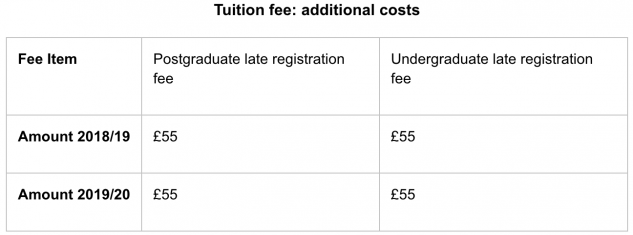
2. Line graphs are effective at showing trends over time and relationships between variables. Make sure it is clear what each axis shows. 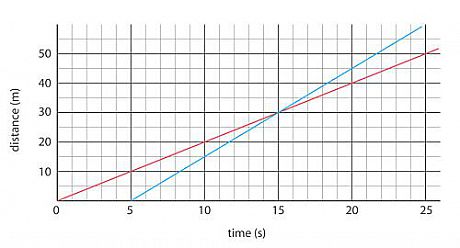
This work has been published under the Creative Commons Attribution ShareAlike license (abbreviated “cc-by-sa”), Version 2.5.
3. Bar charts/graphs are good for comparisons. The bars can be vertical or horizontal. Different colours can help the audience to differentiate the results.
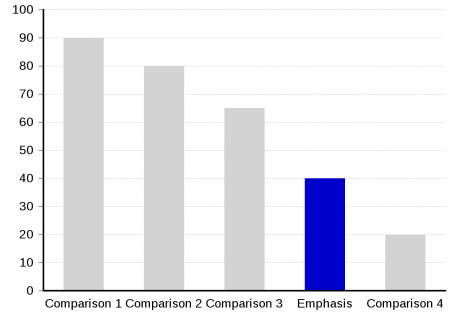
This file is licensed under the Creative Commons Attribution-Share Alike 4.0 International license.
4. Pie charts are best used for showing different proportions of various elements.
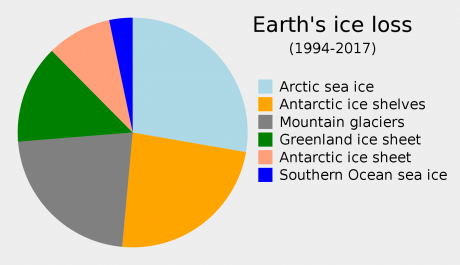
This file is licensed under the Creative Commons Attribution-Share Alike 4.0 International license.
5. Drawings and diagrams can be added where something is more clearly shown in diagrammatic form.
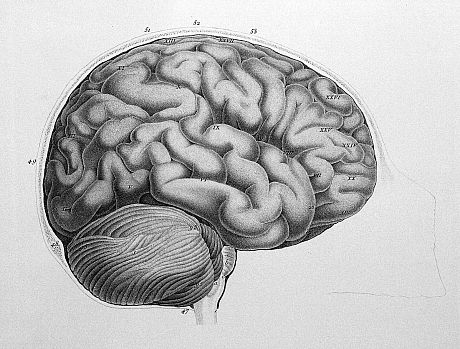
This file is licensed under the Creative Commons Attribution 4.0 International license.
6. Photographs can help to show something that is complicated to explain using just words. However, don’t include photographs just to make your report more interesting!
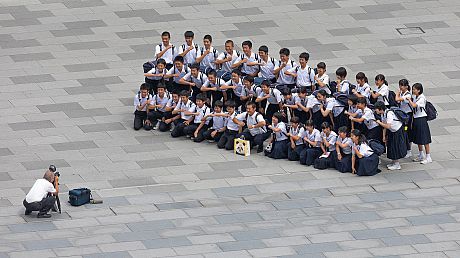
This file is licensed under the Creative Commons Attribution-Share Alike 4.0 International license.
Showing critical analysis
According to tutors who mark reports, the discussion of the findings has the most potential for demonstrating critical analysis and gaining high marks. To do this, you need to:
- critically analyse the findings
- link the findings to the background research
- show how the findings answer the brief.
Critically analysing the findings
Analysing critically means looking at your findings and asking yourself, ‘What do I think about this?’ Then go one step further and ask, ‘What is making me think that?’ Watch the video above to see an example of how this process might work.
Linking findings to the background research
Your background reading helps you to put your findings in context and helps provide possible reasons to explain your results.
- look back over the background reading that you did for your introduction or literature survey
- compare and contrast your findings with what other people have found. Do your results confirm or contrast with their results? Why might this be?
- use previous studies to provide evidence to help explain your findings.
Showing how the findings answer the brief
The discussion of your findings needs to relate to the brief and your research questions.
- before analysing your findings, check the brief and any hypotheses you may have made
- while you are writing your discussion section, keep asking yourself ‘How does this answer my brief?'
- be ruthless and take out any unnecessary information.
Advice and guidance
Check out the Guide to Technical Report Writing and Guide to Laboratory Writing, which have been specifically written for engineering students at Sussex but are good reference points for everyone.
Engage in Research is a very detailed interactive skills resource for bioscience students.
Essay and report writing skills is a free course provided by the Open University
The text resources in this section of the website have been adapted from materials originally produced by LearnHigher CETL and are therefore licensed under a Creative Commons Licence. Please see Creative Commons web site for terms of use. This licence does not extend to the videos of Sussex students and staff.
Other topics in this section relating to Writing and assessments:
Critical essay writing | Reflective writing | Reports (this page) | Dissertations | Academic writing style, editing and proof-reading | Feedback